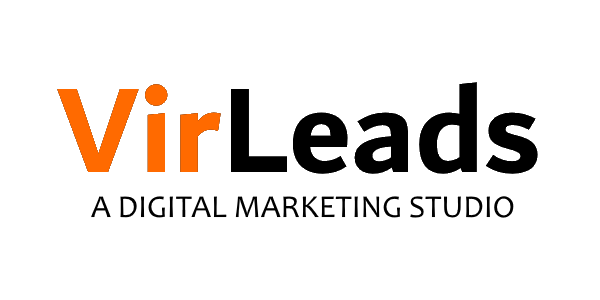"Uncovering the 5 Secrets of Effective SEO: Tips and Strategies for Success"
Introduction
When businesses run Google Ad campaigns or publish blog posts, they frequently make the error of just bidding on keywords or long-tail keywords without first completing extensive keyword research or analyzing those terms. As a result, their efforts may not provide the optimum results. While these are only a few of the most frequent SEO approaches, there are many more ways that organizations may utilize to maximize their results. Let’s explore them together!
Search engine optimization (SEO) is a crucial component of digital marketing that assists websites in increasing their exposure and ranking on search engine results pages (SERPs). It is a complicated process that employs a variety of approaches and strategies targeted at directing high-quality traffic to a website.
Despite its significance, there are various SEO myths and misconceptions that have resulted in confusion and unsuccessful techniques. In this post, we will debunk common SEO myths and present evidence-based insights on efficient techniques for optimizing websites for search engines, as well as the technical aspects of SEO, as well as pointing out frequent SEO mistakes to accomplish a successful SEO campaign.
The Myth of SEO
Myth #1: SEO is a One-Time Process
One of the most common misconceptions regarding SEO is that it is a one-time activity that must be completed only once. This concept is based on the notion that once a website has been optimized for search engines, it will continue to rank high on SERPs. SEO, on the other hand, is a continuous process that necessitates continual effort and modifications to stay up with changes in search engine algorithms and user behavior.
Search engines' algorithms are continually being updated in order to present users with the most relevant and high-quality search results. Google, for example, adjusts its algorithm several times per year, with big updates such as Panda, Penguin, and Hummingbird influencing website ranking and exposure. As a result, it is critical to keep up with these developments and alter your SEO techniques accordingly to maintain your website raking.
Effective SEO methods are not a one-size-fits-all approach. They are determined by a number of factors, including the age of the website, its niche, and competition, among others. As a result, it is critical to conduct regular audits of your website to discover any areas that require improvement and optimize them accordingly.
Myth #2: Keyword Stuffing is an Effective SEO Strategy
Another widespread SEO myth is that cramming your website with keywords is an excellent method for improving your SERP ranking. This method is putting a huge number of keywords into your website's content, meta tags, and other areas in order to attract search engine crawlers.
Search engines, on the other hand, have become wiser and can recognize when a website employs this strategy. Keyword stuffing can hurt your website's ranking and potentially result in penalties, which can have a substantial impact on the visibility and ranking of your website. Instead of employing this outmoded strategy, concentrate on producing high-quality content that naturally combines relevant keywords.
Keyword research is an important part of SEO because it assists website owners in identifying the most relevant and high-traffic keywords in their business. Use keyword research tools to find keywords and phrases that users are looking for and naturally include them into your content. However, overuse of keywords can impair your website's ranking and readability.
Myth #3: Links from Any Website Will Improve Your Ranking
Backlinks are links from other websites that lead visitors to your site. They are an important part of SEO since they assist search engines in determining the relevancy and authority of a website. The higher a website's rating on SERPs, the more high-quality backlinks it has.
Not all links, however, are made equal. Linking to your website from low-quality or spammy websites might hurt its ranking and reputation. When determining the quality of backlinks, search engines analyze various variables, including the linked website's authority, relevance, and credibility.
As a result, it is critical to concentrate on obtaining high-quality, relevant backlinks from respected sources in your field. Some successful link-building tactics that website owners can utilize to generate high-quality backlinks include guest blogging, broken link construction, and link reclamation.
Myth #4: SEO is Only About Ranking on the First Page of SERPs
One prevalent misperception regarding SEO is that it is solely concerned with ranking on the first page of search engine results. While ranking high on SERPs is crucial, it is not the primary metric of success. Other measures, such as user engagement, conversion rates, and overall website traffic, are also important.
To implement a successful SEO strategy, you must focus not just on bringing consumers to your website, but also on giving them a great experience and motivating them to do desired activities such as completing a purchase or filling out a form.
Website owners should prioritize providing high-quality, engaging content that provides value to their target audience in order to increase user experience and conversion rate. They should also improve website navigation and design, as well as page loading speed, to increase user experience.
Tracking and analyzing website analytics on a regular basis is also essential for identifying areas for improvement and altering strategies accordingly. Tools like Google Analytics can provide useful insights into user behavior, traffic sources, and other critical metrics, allowing website owners to make data-driven decisions to improve the operation of their website.
Myth #5: Paid Advertising and SEO are Separate Strategies
Some website owners believe that paid advertising and SEO are two distinct techniques that do not complement one another. These two tactics, however, can complement one another and increase total digital marketing efforts.
Paid advertising, such as Google Ads and social network advertising, can help generate targeted traffic to your website quickly. However, it can be costly, and the traffic is only fleeting. SEO, on the other hand, is a long-term strategy that needs time and work but can result in organic traffic to your website that is sustainable.
Combining these two approaches can give you the best of both worlds. Paid advertising can assist deliver rapid traffic to your website, whereas SEO efforts build long-term, sustainable traffic. Paid advertising can also provide useful data about user behavior and keyword performance, which can be used to inform SEO tactics.

SEO Tactics
As you can see, SEO is an important component of digital marketing that necessitates ongoing effort and adjustments in order to keep a website's presence and ranking on search engine results pages. To achieve the greatest results, website owners should focus on providing high-quality content, doing regular website audits, building high-quality, relevant backlinks, maximizing user experience and conversion rates, and combining paid advertising and SEO techniques. Website owners can increase their website's exposure and drive high-quality traffic by maintaining up to date with changes in search engine algorithms and user behavior and using successful SEO methods.
In addition to correcting common SEO fallacies, website owners may employ a variety of successful SEO tactics to boost their website's exposure and rating on search engine results pages.
1. Conduct Keyword Research:
It is critical to conduct keyword research in order to understand what your target audience is looking for and what keywords they use to find relevant content. You may improve your website's exposure and rating on search engine results pages by optimizing its content for relevant keywords.
2. Produce High-Quality material:
Producing high-quality, relevant, and engaging material is critical for attracting and retaining website visitors. Website owners should focus on generating useful, entertaining, and distinctive content that corresponds with the interests of their target audience because search engines prefer websites that provide value to users.
3. Optimize Website Architecture and Navigation:
The architecture and navigation of a website are important factors in user experience and search engine optimization. Website owners should prioritize optimizing website navigation and structure so that visitors and search engines can easily find and access content.
4. Build High-Quality Backlinks:
Backlinks from reliable, high-quality websites can help a website's ranking in search engine results pages greatly. Website owners should prioritize the creation of high-quality, relevant backlinks to their sites via outreach, guest blogging, and other link-building techniques.
5. Using Social Media to Drive Traffic:
Social media may be a useful strategy for driving traffic to a website and enhancing its presence on search engine results pages. Social media channels should be used by website owners to promote their content and engage with their target audience.
6. Maintain Current SEO Best Practices:
Because search engine algorithms are continuously changing, it's critical to stay current on SEO best practices and change your methods accordingly. Website owners should monitor and analyze website analytics on a regular basis, stay up to date on industry trends and changes in search engine algorithms, and alter their strategy accordingly.
Technological considerations for successful SEO performance
1. Website speed:
Website speed is an important component in SEO since search engines favor fast-loading sites in their results. Slow-loading sites can degrade the user experience, resulting in higher bounce rates and poorer engagement. Several actions can be taken to improve website speed, including:
Image compression: Large image files might slow down the speed of a website. Images can be compressed to minimize file size without sacrificing quality.
Minifying code: The act of removing unneeded whitespace, comments, and other elements from your website's HTML, CSS, and JavaScript files is known as minifying code. This can minimize file size and speed up loading times.
Caching refers to the process of saving frequently used files on a user's device so that they do not have to be reloaded every time the user visits your site. You may cut load times and increase overall website speed by utilizing browser caching.
2. Mobile optimization:
With mobile devices accounting for a rising amount of web traffic, it's critical that your website is mobile-friendly. Consider the following when optimizing your site for mobile:
Make use of responsive design: A responsive design strategy is one that adapts to different screen sizes and device kinds. You can ensure that your site appears attractive and operates properly on all devices by employing responsive design.
Optimize photos for mobile: Because mobile devices have smaller screens than desktop computers, it is critical to optimize photographs for mobile. This includes lowering the size of image files and selecting acceptable image proportions.
Avoid pop-ups and interstitials: Pop-ups and interstitials can have a negative influence on mobile user experience because they are difficult to ignore or navigate around. On mobile devices, avoid utilizing these elements.
3. Site structure and navigation:
A clear, well-organized site structure can make it easier for search engines to crawl and index your site, which can increase your rankings. Consider the following while designing your site's structure and navigation:
Use a page hierarchy: Your website should have a clear page hierarchy, with logical categories and subcategories that represent the material on your site.
Use internal linking: Internal linking can assist search engines comprehend the relationships between your pages and can also help users navigate your site.
Use descriptive URLs: Use descriptive URLs that reflect the content on your site. A page regarding "SEO best practices," for example, may have a URL like "yoursite.com/seo-best-practices."
4. Security:
A safe website is critical for user trust as well as SEO success. Consider the following to improve the security of your website:
Use HTTPS encryption: HTTPS encryption protects user data during transmission. Because HTTPS is a ranking factor in Google's algorithm, employing it can help your SEO performance.
To prevent unwanted access, use strong, unique passwords for all of your website's user accounts.
Keep software up to current: To avoid security risks, keep all of your website's software up to date.
5. Technical SEO:
The optimization of non-content aspects on your website, like as meta tags, schema markup, and XML sitemaps, is referred to as technical SEO. Consider the following while optimizing the technical SEO of your website:
Make use of descriptive meta tags: Search engines use meta tags to learn about your website. Use meaningful meta titles and descriptions that appropriately reflect your site's content.
Use schema markup: Schema markup gives search engines more information about the content of your website. Using schema markup can help your website rank higher in search results.
Use XML sitemaps: XML sitemaps give search engines with a list of all the pages on your website.
The website's loading speed is another key technological component for SEO. A website's loading speed can affect its search engine ranking, user experience, and overall conversion rates. A website that takes too long to load may experience significant bounce rates, which can harm its search engine rankings.
According to a Google study, pages that take more than three seconds to load are abandoned by 53% of mobile site visitors. As a result, optimizing a website's loading speed is critical for providing a good user experience and maintaining a high search engine rating.
Optimizing photos on the website is an excellent method for increasing loading speed. Images can be optimized by reducing their file size without sacrificing their quality. This can be accomplished by utilizing image compression software or by using the appropriate file format. Another approach is to employ a content delivery network (CDN) to cache website material and provide it from servers closer to the user's location, minimizing the distance data must travel and boosting loading time.
Aside from loading speed, website security is an important technological component for SEO. Websites that are not secure may be penalized by search engines, lowering their ranking. Google has said unequivocally that HTTPS is a ranking indication, and websites that have not switched to HTTPS may see a reduction in search engine ranks.
To migrate to HTTPS, obtain an SSL/TLS certificate and configure the website to use HTTPS. This offers website users with encryption and authentication, guaranteeing that data exchanged between the website and the user is secure.
To put it simply, technology is critical to the success of SEO. A well-optimized website with a fast-loading speed, mobile responsiveness, and a secure connection can boost search engine ranks and create a favorable user experience. Therefore, it is critical to stay up with technical advances and incorporate them in order to optimize website performance for search engines. There are various plugins that are widely used as SEO tools:
Yoast SEO: Yoast SEO is a comprehensive plugin that helps optimize on-page SEO factors such as title tags, meta descriptions, content analysis, and more. It also provides XML sitemap generation, social media integration, and other features to help improve SEO. (https://yoast.com/wordpress/plugins/seo/ )
All in One SEO Pack: Similar to Yoast SEO, All in One SEO Pack provides on-page optimization features such as title tags, meta descriptions, and keyword optimization. It also includes XML sitemap generation, social media integration, and more. (https://wordpress.org/plugins/all-in-one-seo-pack/ )
WP Smush: WP Smush is an image optimization plugin that helps reduce the file size of images on a website without compromising their quality. This can help improve website loading speed and overall SEO performance. (https://wordpress.org/plugins/wp-smushit/ )
W3 Total Cache: W3 Total Cache is a caching plugin that can help improve website loading speed by caching website content and reducing server load. (https://wordpress.org/plugins/w3-total-cache/)
Broken Link Checker: Broken Link Checker is a plugin that scans a website for broken links and provides a report on them. Fixing broken links can help improve user experience and search engine rankings. (https://wordpress.org/plugins/broken-link-checker/)
Redirection: Redirection is a plugin that helps manage 301 redirects and 404 errors on a website. Properly managing redirects can help maintain SEO performance and ensure a good user experience. (https://wordpress.org/plugins/redirection/)
While plugins can be useful for SEO, they are not a replacement for effective SEO methods and strategies. A well-optimized website with quality content and a solid technical base will nonetheless outperform a badly optimized website with only plugins.

Guidelines for avoiding Google Search Engine penalties
Follow Google's webmaster guidelines: Google offers a set of recommendations outlining best practices for websites. These standards address a variety of themes, including content quality, technical SEO, and link development. Following these suggestions can assist you in meeting Google's criteria and avoiding penalties.
1. Avoid spamming tactics:
Google penalizes websites that employ spammy techniques like keyword stuffing, cloaking, and link purchasing. These practices can ruin your website's reputation and lead to penalties or even removal from search results.
2. Monitor your backlink profile:
Backlinks are a ranking element for Google, but not all backlinks are made equal. Backlinks that are low-quality or spammy might affect your website's reputation and result in penalties. Monitor your backlink profile on a regular basis and disavow any low-quality or spammy backlinks.
3. Maintain your website:
Obsolete websites with broken links and obsolete material can degrade user experience and lead to fines. Maintain your website with fresh information and periodically monitor and repair any broken links.
4. Use ethical SEO techniques:
Avoid utilizing unethical or black-hat SEO techniques like cloaking, keyword stuffing, and link purchasing. These actions can affect the reputation of your website and result in penalties.
5. Use Google Search Console:
Google Search Console is a sophisticated, free tool that allows website owners to receive useful insights on the performance of their website in Google search results. By using this tool on a regular basis, website owners can identify and address any crawl problems, security issues, or penalties that may be affecting their website's visibility and ranking. It also provides valuable information about the queries and keywords driving visitors to your site, allowing you to fine-tune your SEO approach accordingly.
By following these tips and practicing ethical SEO, you can avoid penalties from Google's search engine and improve your website's performance in search results.
In Conclusion
As you can see, there's much more to SEO than just keyword stuffing and link building. SEO is a constantly changing activity that necessitates ongoing learning and modification. By following these important guidelines, you may increase your website's search engine exposure, user experience, and conversion rates, thus maximizing its success potential.
Remember that SEO is a long-term investment in the growth and profitability of your website, not a one-time effort. You can stay ahead of the curve and achieve long-term SEO success by continuously monitoring your website's performance, staying up to date on industry trends and best practices, and making data-driven decisions.
So, make SEO a priority in your overall digital marketing plan by applying these ideas to your website. You can increase the exposure of your website and drive more visitors, leads, and sales with patience, effort, and a willingness to learn.


